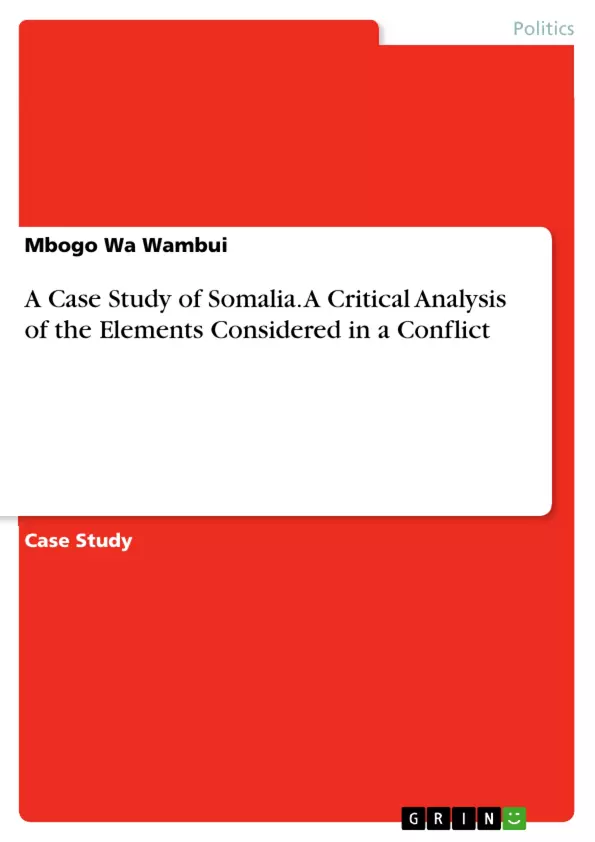Armed conflicts are as old as man. This is true for Somalia which shall be discussed in detail in this paper. Understanding the nature and definition of armed conflict, dates to the Conference of the National Red Cross held in 1946, the precursor to the Geneva Conventions of 1949 that specified the essence of armed conflicts. According to one definition of armed conflict based on the Doctrine of International humanitarian law, it is ‘the use of weapons as an instrument to harm persons and /or property in order to overcome the opposing party’. Arising from this doctrine is the understanding is that an armed conflict is one in which there is intervention by armed forces. Arising from this brief definition of an armed conflict, this paper, in the next section, we will examine and evaluate the elements of an armed conflict with a special focus on Somalia- a nation that has been in the throes of armed conflict for about three decades now. In the next section, an assessment of the elements of armed conflict in the Somalia civil war will be attempted.
Inhaltsverzeichnis (Table of Contents)
- Introduction
- Armed Conflict and the Case of Somalia
- Somalia
Zielsetzung und Themenschwerpunkte (Objectives and Key Themes)
This paper provides a critical analysis of the elements considered in an armed conflict, using Somalia as a case study. It examines the historical context of the Somali conflict, focusing on the impact of colonialism and its role in shaping the current state of affairs. The paper also delves into the different types of armed conflicts, including international and non-international conflicts, and analyzes how Somalia has been impacted by both.
- The historical context of the Somali conflict and the impact of colonialism
- The nature and definition of armed conflict
- The different types of armed conflicts: international and non-international
- The evolution of conflict in Somalia, including the transition between international and non-international conflict
- The role of clans and their impact on Somali politics and conflict
Zusammenfassung der Kapitel (Chapter Summaries)
- Introduction: This chapter introduces the concept of armed conflict and its historical context, highlighting the importance of understanding the definition and nature of armed conflict as outlined by international humanitarian law. The chapter also introduces Somalia as a case study, emphasizing its prolonged experience with armed conflict.
- Armed Conflict and the Case of Somalia: This chapter explores the different types of armed conflict, including international armed conflict (IAC) and non-international armed conflict (NIAC), and provides examples of each. It examines the potential for conflict to transition between these categories, highlighting the complex nature of armed conflict in contemporary contexts.
- Somalia: This chapter delves into the historical context of the Somali conflict, tracing its roots back to the colonial period. It discusses the division of Somali territory by colonial powers and the subsequent impact of this division on post-independence politics and national aspirations. The chapter also examines the role of colonialism in shaping the Somali state system and its interaction with traditional clan structures.
Schlüsselwörter (Keywords)
The primary keywords and focus topics of this paper include: armed conflict, Somalia, colonialism, international armed conflict, non-international armed conflict, Geneva Conventions, clans, Somali history, political instability, state formation, and conflict resolution.
- Arbeit zitieren
- Mbogo Wa Wambui (Autor:in), 2020, A Case Study of Somalia. A Critical Analysis of the Elements Considered in a Conflict, München, GRIN Verlag, https://www.grin.com/document/1130307



